Hello, Honey: Beekeeping Anywhere for Fun, Food and Good Deeds
http://decor-ideas.org 03/26/2014 02:23 Decor Ideas
Honey bees are more important than you may realize. A recent Houzz ideabook discussed the benefits of native bees, of which there are around 4,000 species in North America alone. (There are more than 20,000 bee species worldwide.) Honey bees are also remarkable, in large part due to the number of individuals in each colony — as many as 80,000 bees per hive. Honey bees make especially good and efficient pollinators; tens of thousands of bees visit hundreds of thousands of flowers each day, transferring pollen from flower to flower and facilitating the production of local fruits and vegetables — these bees help provide nearly one-third of all the food we eat.
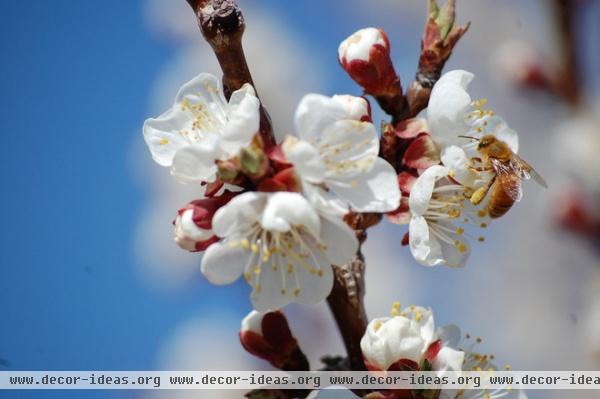
All bees have an important ecological role, but this ideabook focuses on the honey bee. While other bees and insects do make honey, honey bees (Apis mellifera) make the most of it, due to the massive workforce that is dedicated to collecting pollen and nectar, the balanced diet for bees. Pollen is protein-rich, and nectar is carbohydrate-rich. Nectar is concentrated by the honey bees to reduce the water content and help preserve it for later consumption (by bees or people).
Bees as an Element of Design
We need bees — especially honey bees — to pollinate our fruit and vegetable crops, and they need us to stay healthy. There are less than half the number of beehives in the United States today compared to the 1940s. This is already causing a decrease in some food availability, like almonds, and an increase in some food prices — not good. You can help save the bees, and you can do it in a way that is not only smart, but also worthy of a design nod.
Bees with human caretakers are faring better than those without, and urban beekeepers seem to be having better luck than rural ones. At least in the city of Boston, where I live, the bees produce more honey and survive the winter better than those in surrounding rural and suburban habitats. Could our design and urban planning decisions — whether conscious or not — be helping the bees?
The three biggest challenges facing bees today are chemicals (pesticides, fungicides and herbicides), infectious diseases and habitat loss. While the average person cannot control the first two (other than minimizing chemical use on the property), anyone can help with the third.
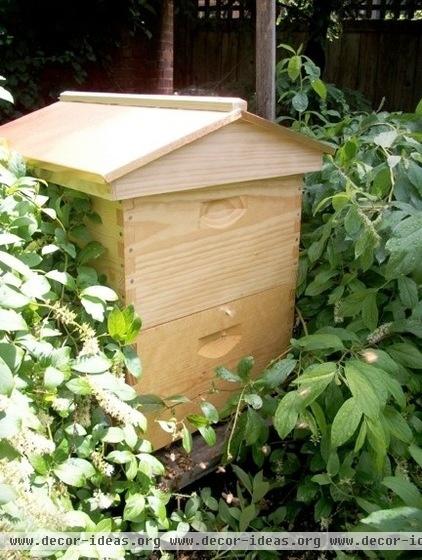
How to Help the Bees
Plant flowers. The easiest way to help bees is to create and preserve habitats for them. Spread seeds that are indigenous to your local area. Pay attention to extending the availability of flowers for as long as possible. For example, if you live in an area with a harsh winter, plant seeds that will provide flowers as early in the spring and as late in the fall as possible.
Within that framework, you can have fun with what types of flowers are present, and what floral essences will naturally flavor your backyard honey, such as lavender, thyme, orange blossom and many more. Visit the National Honey Board for more floral flavors.
Even if you don’t have property of your own, consider seed bombing by throwing a handful of native seeds alongside a local highway. The more flowers we have, the more pollinators will benefit. Remember, we need bees and other pollinators (butterflies, moths, bats, and 200,000 others).
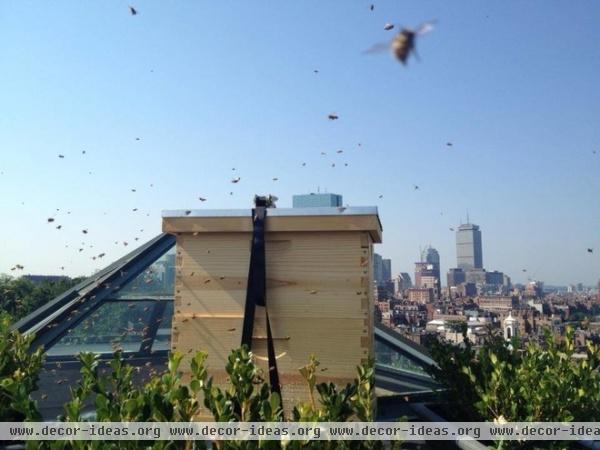
Add a beehive. Do you have any spots that are too shady to grow much? Or do you have any spots that are too sunny, such as a rooftop, that are not being used for anything? Consider adding a beehive. Most towns don’t require a permit for keeping bees, but permits do vary by state and city, so it’s important to check with your local beekeeping groups for specific information.
Beekeeping groups, schools and services such as ours (The Best Bees Company) are more prevalent than ever before, and access to bees is also greater than it has ever been.
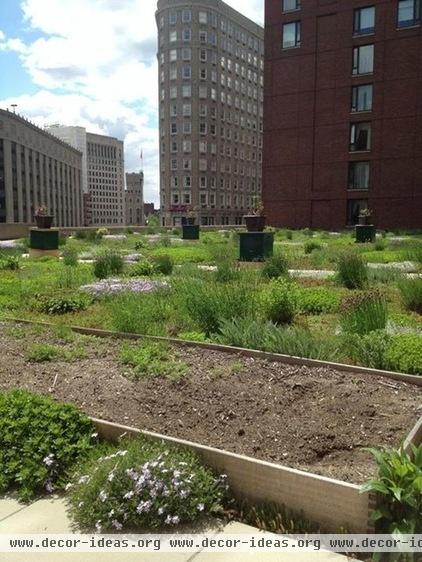
Many businesses are also turning to beekeeping to improve their sustainability. Fairmont Hotels and InterContinental hotels have made beekeeping an integrated part of their brands; many properties have bees onsite, including right in the heart of Times Square (the honey is delicious). Here is the rooftop apiary and garden at the Four Seasons Boston.
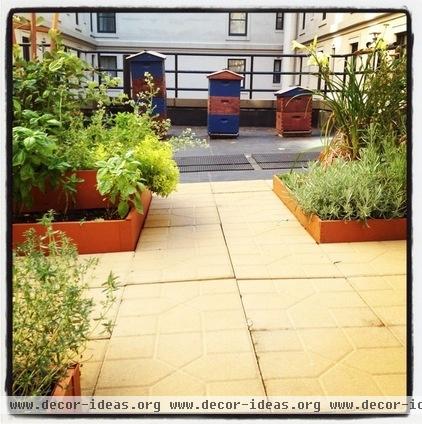
Is a Backyard Beehive for You?
The most remarkable thing about beekeeping is how well we can integrate it into modern living. You need only about a 2- by 3-foot space for a beehive, and that includes room for the beekeeper to stand. Honey bees can fly for miles (some beekeepers say 2 miles; some say as many as 5 miles), so there’s no need to have a garden or flowers onsite. This is especially important for urban beekeepers, who often have limited access to usable outdoor space.
Above the frost line (where winters cause deep freezes), only nonaggressive honey bees survive; winter is nature’s reset button for aggressive bees. Bees are present in the environment already, but you can always explain your plans with neighbors.
New designs for beehives allow property owners to match beehives with their homes or hotels. Artists are designing beehives with fine paints and curated, bronze nails with pitched, copper rooftops.
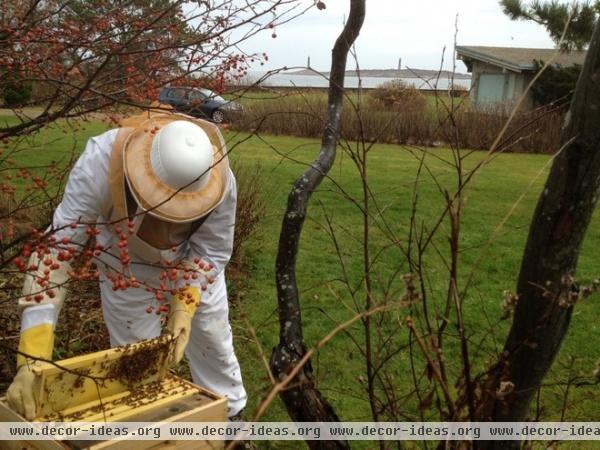
If you choose to add a beehive, by the end of the growing season, you and your neighbors for a few miles away should have more fruits and vegetables to harvest.
You’ll also have honey and beeswax — it doesn’t get more local than your own backyard or rooftop. The amount of products your bees will make will vary by region, weather and other factors, such as agricultural chemicals and access to diverse flower species versus monoculture crops. Our beehives have produced as much as 100 pounds of harvestable honey (beyond what the bees need for themselves). That’s about 200 small honey containers per hive, at the upper end of what’s possible. Some hives produce no honey, so this can vary widely.
Honey and beeswax can both be harvested using basic kitchen utensils, such as a spoon, strainer and bowl. Simply scoop the honey and wax comb out of the hive and into a strainer sitting over a bowl. After a few days, you’ll have freshly harvested honey in the bowl and beeswax in the strainer.
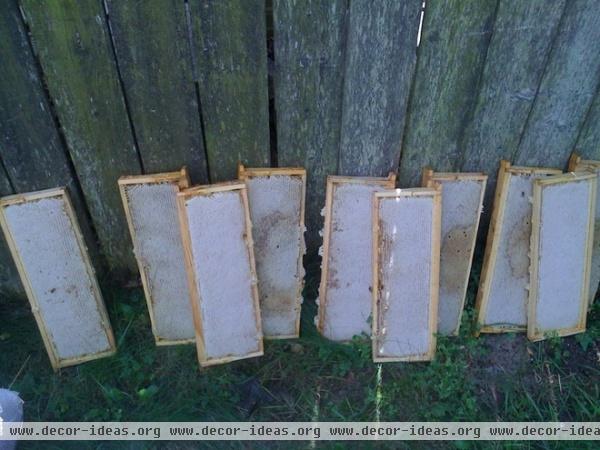
Fascinatingly, honey is the only food that never spoils. It comes in a wide variety of flavors and colors, from places around the world, from the white honeys of the Kiawe forests and volcanic soils in Hawaii to the darkest of honeys from the Zambezi river basin in Zambia, Africa.
I like to start my college-level microbiology courses with a honey exercise on day one. I bring a variety of honey samples for tasting to help engage the students beyond basic textbook readings and lectures. I ask my students why honey was found in the tombs of pharaohs in Egypt, where it was still good for consumption thousands of years after it was produced, with no refrigeration, no sterilization and no pasteurization. This is a fun thinking exercise. (Post your guesses in the Comments section.)
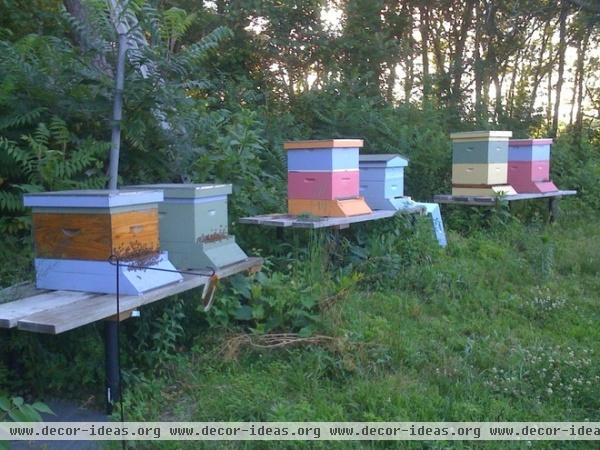
Designing a property with bees and pollinators in mind is vitally important. Bees bring any property to life. They provide an opportunity to make use of underutilized space. Dandelions, clover and other “weeds” provide food that makes bees healthy.
Use this information to make smart decisions with your landscape design. Use the knowledge of pollinators and habitat creation in your designs to make this world a better place. You have the power to keep food plentiful and affordable, all through smarter living and a greater awareness of keeping bees in mind during your design process.
However you help the bees, whether by having beehives, planting a garden or seed bombing an otherwise barren land, the effects will extend farther than any one person.
Your turn: Do you or would you keep bees? Tell us about it in the Comments section.
More info: The Best Bees Company | Noah Wilson-Rich’s TED Talk about honey bees
Related Articles Recommended












